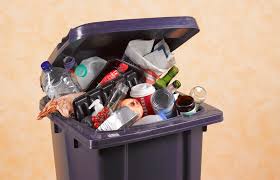Most people think they’re doing their part by tossing recyclables into the right bin. But the reality behind what gets recycled—and what doesn’t—might surprise you.
Only a fraction of household waste is truly recyclable. The rest? It ends up in landfills, incinerators, or the environment.
This article breaks down what percentage of household waste can be recycled, why the number matters, and how you can improve your personal recycling impact.
Why Understanding Household Waste Recycling Matters
- Global waste generation is increasing every year
- Recycling rates vary by country and material
- Misconceptions lead to improper recycling
Knowing what can and cannot be recycled helps reduce contamination, saves money, and protects the environment.
What Percentage of Household Waste Can Be Recycled?
Studies show that up to 75% of household waste is recyclable, but only about 32% is actually recycled in the U.S.
Breakdown by Material Type
| Material | Recyclable (%) | Actually Recycled (%) |
| Paper | 90 | 66 |
| Cardboard | 100 | 89 |
| Plastic (all types) | 50 | 8–9 |
| Glass | 100 | 31 |
| Metals (aluminum, steel) | 100 | 67 |
| Food Waste | 100 (compostable) | <5 |
The Gap Between Recyclable and Recycled
1. Contamination Ruins Good Batches
- Food-soiled packaging
- Mixed materials (e.g., plastic-coated paper)
- Non-recyclables tossed into the recycling bin
2. Lack of Infrastructure
- Some regions don’t have the technology or facilities to process certain materials
- Rural areas may lack curbside programs entirely
3. Market Demand for Recyclables
- If there’s no buyer for recycled materials, they go to waste
- Quality matters—poorly sorted or contaminated items are rejected
How Is Household Waste Categorized?
| Waste Type | Examples | Recyclable? |
| Organic | Food scraps, yard waste | Yes (if composted) |
| Paper | Newspapers, mail, office paper | Yes |
| Plastics | Bottles, tubs, containers | Some types only |
| Metals | Cans, foil | Yes |
| Glass | Bottles, jars | Yes (if clean) |
| Hazardous Waste | Batteries, chemicals, paint | Special handling |
| E-waste | Phones, computers, TVs | Special recycling |
| Mixed Waste | Toys, composite packaging | Often no |
What Percentage of Household Waste Can Be Recycled Globally?
Country Comparisons
| Country | Recycling Rate (%) | Notes |
| Germany | 66 | Leading global recycler |
| South Korea | 59 | Strong composting and food waste systems |
| Austria | 58 | Efficient sorting and infrastructure |
| UK | 44 | Struggles with plastic |
| US | 32 | Low plastic and food waste recycling |
Visual Chart: Global Recycling Rates
![Global Recycling Rates Chart]
Why Are So Many Recyclables Not Recycled?
1. Confusing Labels
- Misleading recycling symbols
- Lack of standard labeling for plastic types
2. Mixed Packaging Materials
- Coffee cups: paper lined with plastic
- Snack bags: aluminum and plastic fused
3. Lack of Consumer Awareness
- Many people “wishcycle” (putting the wrong items in the recycling bin)
- Items like plastic bags, straws, or Styrofoam are often mistakenly included
Steps to Improve Your Household Recycling Rate
Sort Properly
- Rinse containers
- Remove caps and lids
- Flatten cardboard
Know What’s Accepted Locally
- Check your city’s recycling guidelines
- Some cities accept items others don’t (e.g., #5 plastics)
Reduce First
- Buy in bulk to cut packaging
- Choose reusable over disposable
Compost Organic Waste
- Start a backyard compost bin
- Use a local drop-off service if available
Buy Recycled Products
- Create demand for recycled materials
- Look for 100% post-consumer content labels
What Types of Household Waste Are Often Overlooked?
E-Waste
- Only 17% of global e-waste is recycled
- Recyclable metals include gold, silver, and copper
Textiles
- 85% of clothing ends up in landfills
- Most fabrics can be reused or recycled
Batteries and Lightbulbs
- Require special collection
- Never toss in household bins
Better Systems: What Works and What Doesn’t
Effective Systems
- Deposit-return schemes for bottles and cans
- Pay-as-you-throw (PAYT) programs
- Clear, standardized labeling
Ineffective Systems
- Single-stream recycling without public education
- Lack of investment in recycling infrastructure
- Exporting waste to other countries
Key Takeaways: What Percentage of Household Waste Can Be Recycled?
- Around 75% of household waste is technically recyclable
- Only about 32% is actually recycled in practice
- Common barriers include contamination, infrastructure gaps, and poor sorting

Leave a Reply